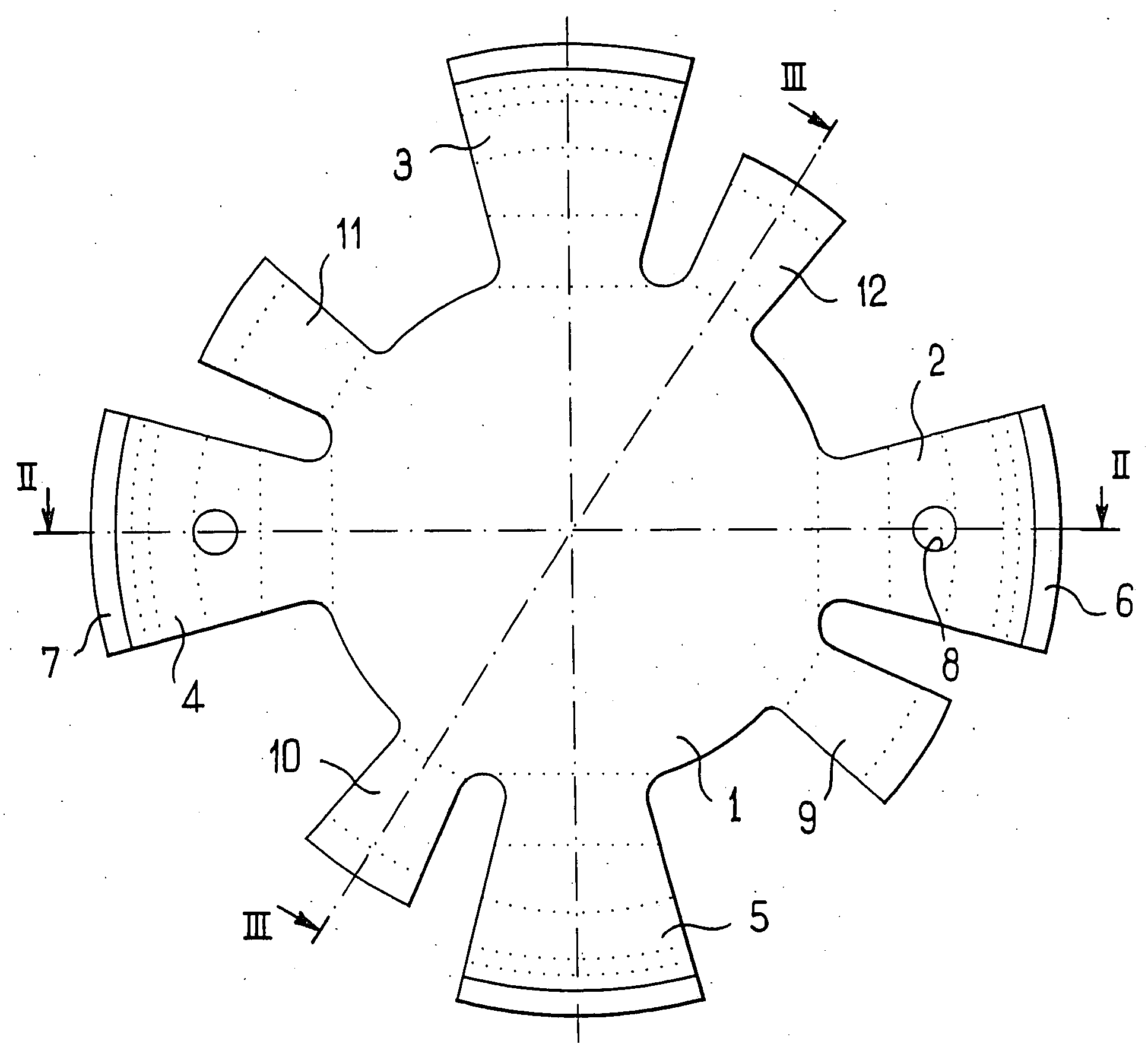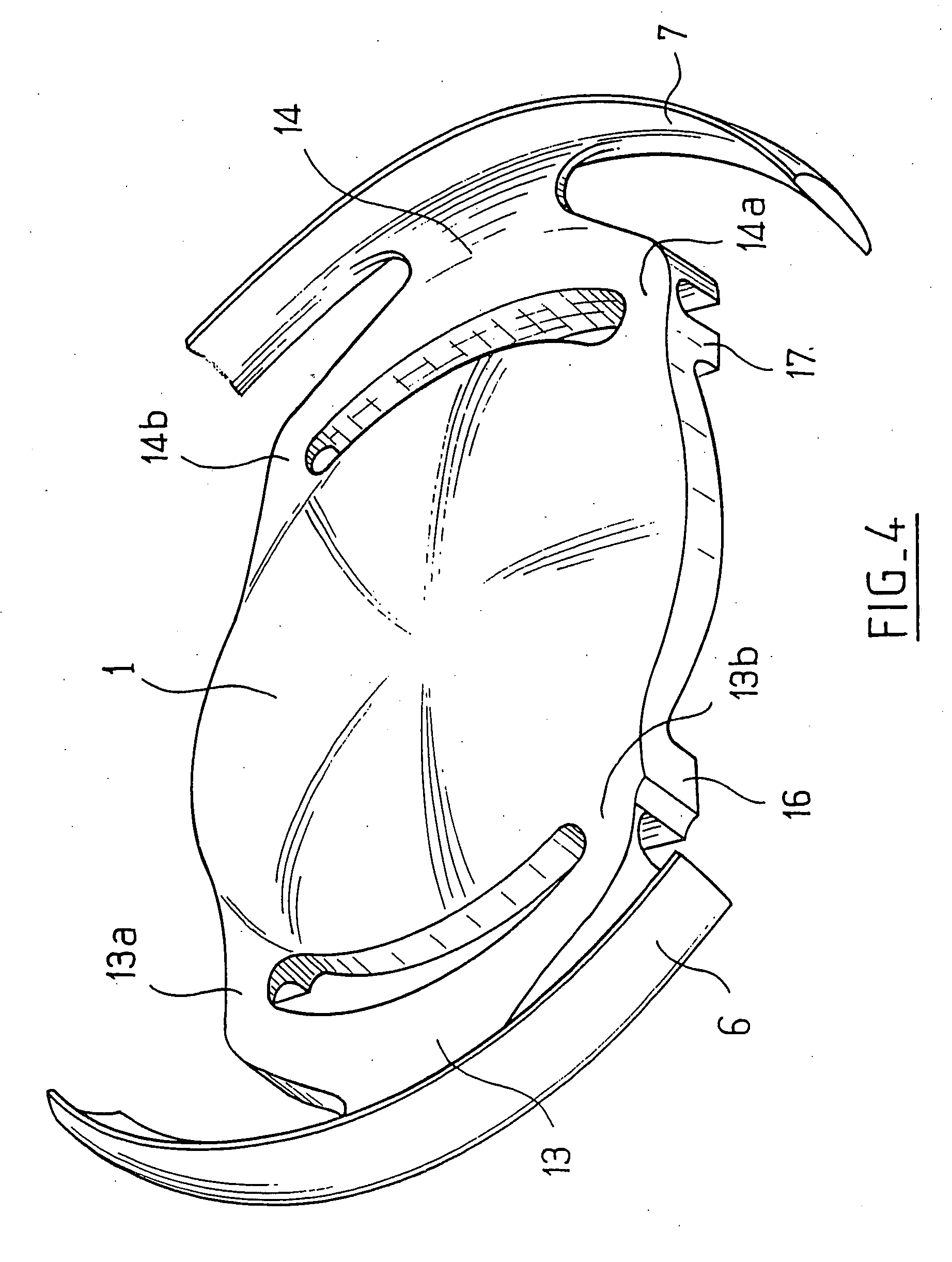Intraocular implant and an artificial lens device
a technology of intraocular implants and artificial lenses, applied in the field of intraocular implants and artificial lens devices, can solve the problems of poor performance of implants, inability to restore any faculty of accommodation to operated patients, and practically non-existent accommodation, so as to optimize the ability of the subject to accommoda
- Summary
- Abstract
- Description
- Claims
- Application Information
AI Technical Summary
Benefits of technology
Problems solved by technology
Method used
Image
Examples
first embodiment
[0063] The device of the invention also comprises an element that is separate from the implant and that is shown in a rest state in FIGS. 8 and 10, for a first embodiment, and in FIG. 9 for another embodiment. This element 120 carries a gutter-shaped portion 121 defined by an anterior lip 122 and a posterior lip 123 provided with an internal bead 124, the posterior lip 123 being extended as a dome 125 closing the posterior portion of this element 120. This gutter-shaped portion is provided with transverse slots 126 co-operating with its deformation ability both in the direction parallel to its axis of revolution R and in a direction perpendicular thereto.
[0064] The greatest diameter of the element 120, referenced d in FIG. 10 and referred to as its equatorial diameter, is substantially equal, at rest, to the diameter of the lens of a subject, and in particular the diameter which the lens used to have when the subject who is to be operated on was 25 to 30 years old, and as measured i...
embodiment 140
[0067]FIG. 14 is a plan view of a variant embodiment 140 of the implant 100 of FIG. 7. The difference between the two embodiments lies in the fact that in FIG. 14, the implant 140 has six haptic arms 141 separated from one another by gaps 142 that are keyhole-shaped. As in FIG. 7, these arms are connected to the central lens 143 by hinge zones 144 and to respective end shoes 145 likewise by hinge zones that are not visible in FIG. 14.
[0068]FIGS. 15 and 17 show the artificial lens device of the invention in its equilibrium state when the implant 100 is received in the case example 120, 130. The implant bears against the inside surface of the gutter by means of the substantially toroidal outside surfaces of the shoes which thus press closely against said inside surface. The implant exerts a force on the case element which tends to expand radially. However, the case element opposes this force with force that leads to a rest state in which the implant is much more highly deformed than i...
PUM
 Login to View More
Login to View More Abstract
Description
Claims
Application Information
 Login to View More
Login to View More - R&D
- Intellectual Property
- Life Sciences
- Materials
- Tech Scout
- Unparalleled Data Quality
- Higher Quality Content
- 60% Fewer Hallucinations
Browse by: Latest US Patents, China's latest patents, Technical Efficacy Thesaurus, Application Domain, Technology Topic, Popular Technical Reports.
© 2025 PatSnap. All rights reserved.Legal|Privacy policy|Modern Slavery Act Transparency Statement|Sitemap|About US| Contact US: help@patsnap.com



